Your Iron Is Filthy. Here’s How to Clean It Without Ruining It.
Let’s be real for a second. A clean iron is one of those things you don’t think about until it’s way too late. You know, right after it’s dragged a sticky, brown mess across a brand-new white shirt. I’ve spent years working with fabrics, and trust me, I’ve seen it all. A dirty iron doesn’t just look gross; it can snag delicate clothes, transfer gunk, and basically undo all the work of washing.
In this article
- Your Iron Cleaning First-Aid Kit
- So, What IS That Gunk, Anyway?
- Know Your Gear: Not All Irons Are Created Equal
- Safety First (Please Read This)
- The 30-Second Habit That Prevents 90% of Problems
- The Cleaning Playbook: Proven Ways to Get the Gunk Off
- Advanced Moves: Descaling and Commercial Cleaners
- Knowing When to Say Goodbye
- Inspiration:
But the good news is that getting it back to its smooth-gliding glory is usually pretty simple and, more importantly, cheap. Most of these fixes use stuff you probably already have at home. Before you panic-buy a new iron, let’s get yours clean.
Your Iron Cleaning First-Aid Kit
Honestly, you can solve 99% of iron problems with a few basic supplies. It’s worth grabbing these to have on hand—the whole kit will set you back less than $10.
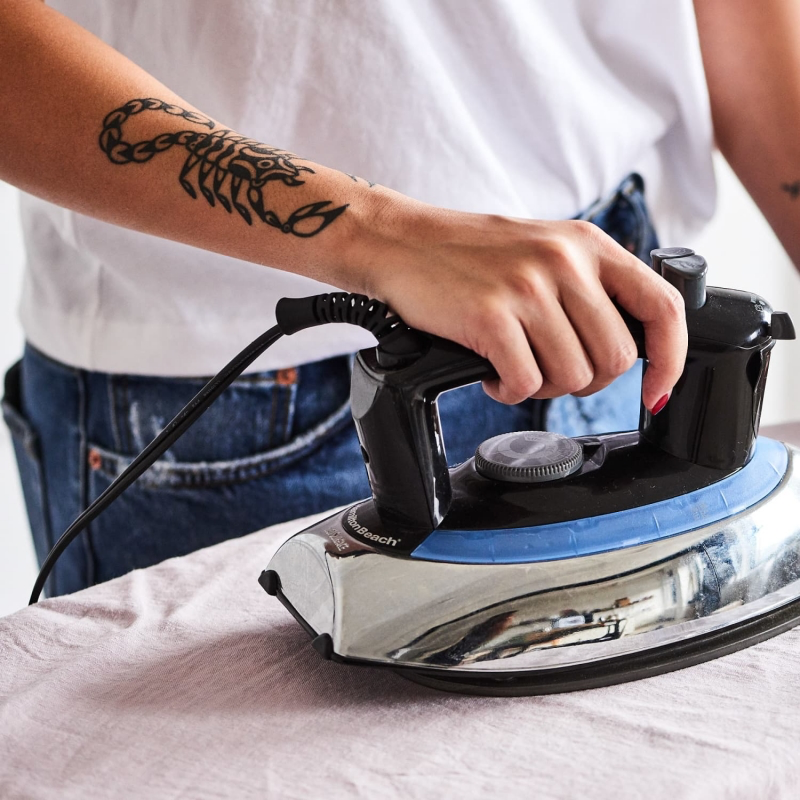
- Distilled Water: The #1 rule for a happy steam iron. About $1-2 a gallon at any grocery store.
- Baking Soda: A box costs, what, a dollar? It’s a fantastic, gentle abrasive.
- 100% Acetone: You can find this in the nail polish aisle at any pharmacy for around $3. Make sure it’s the pure stuff, not the oily remover blends.
- A few soft cloths (old t-shirts or microfiber towels are perfect) and some cotton swabs.
So, What IS That Gunk, Anyway?
Understanding what’s stuck to your iron helps you pick the right way to get it off. It’s usually one of these culprits:
- Melted Fibers: The classic disaster. You set the iron too hot for a synthetic fabric like polyester, and it literally melts onto the soleplate, leaving a hard, plastic-y smear.
- Spray Starch Buildup: Over time, laundry aids like starch and sizing can cook onto the iron, creating a sticky, brownish film that makes the iron drag.
- Mineral Deposits: This is what happens when you use tap water. Hard water leaves behind minerals like calcium that clog steam vents, causing your iron to spit white, chalky gunk on your clothes. Seriously, just use distilled water. It’s the cheapest insurance you can buy for your iron.
- Dye Transfer: Sometimes, dark or vibrant dyes can leave a faint residue on the hot plate, which then transfers to the next light-colored thing you iron.
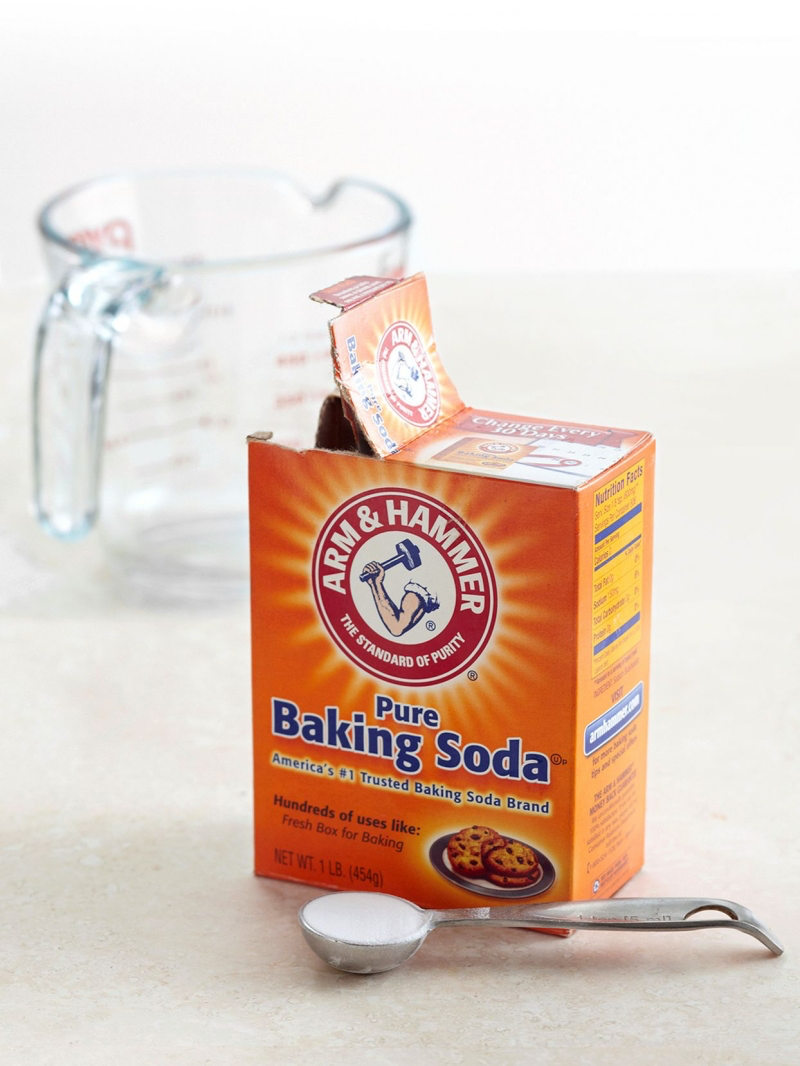
Know Your Gear: Not All Irons Are Created Equal
Before you start scrubbing, you have to know what the bottom of your iron—the soleplate—is made of. Using the wrong method can cause permanent scratches, and a scratched iron is a useless iron. If you’re not sure, a quick search for the model number online should tell you what you’ve got.
Stainless Steel Soleplates
This is the classic workhorse. It’s durable, heats evenly, and can take a bit of a beating. Most of the pro-grade irons use stainless steel. The good news is they are tough and can handle slightly more aggressive cleaning. The bad news? They aren’t invincible, and a deep scratch is still a problem.
Ceramic Soleplates
These are all about the glide. A ceramic plate is usually an aluminum base with a super-smooth ceramic coating. They’re fantastic at distributing heat and feel amazing to use. The catch is that the coating can chip or scratch more easily than steel. And once it’s scratched, that’s it—the damaged spot will snag your clothes forever.
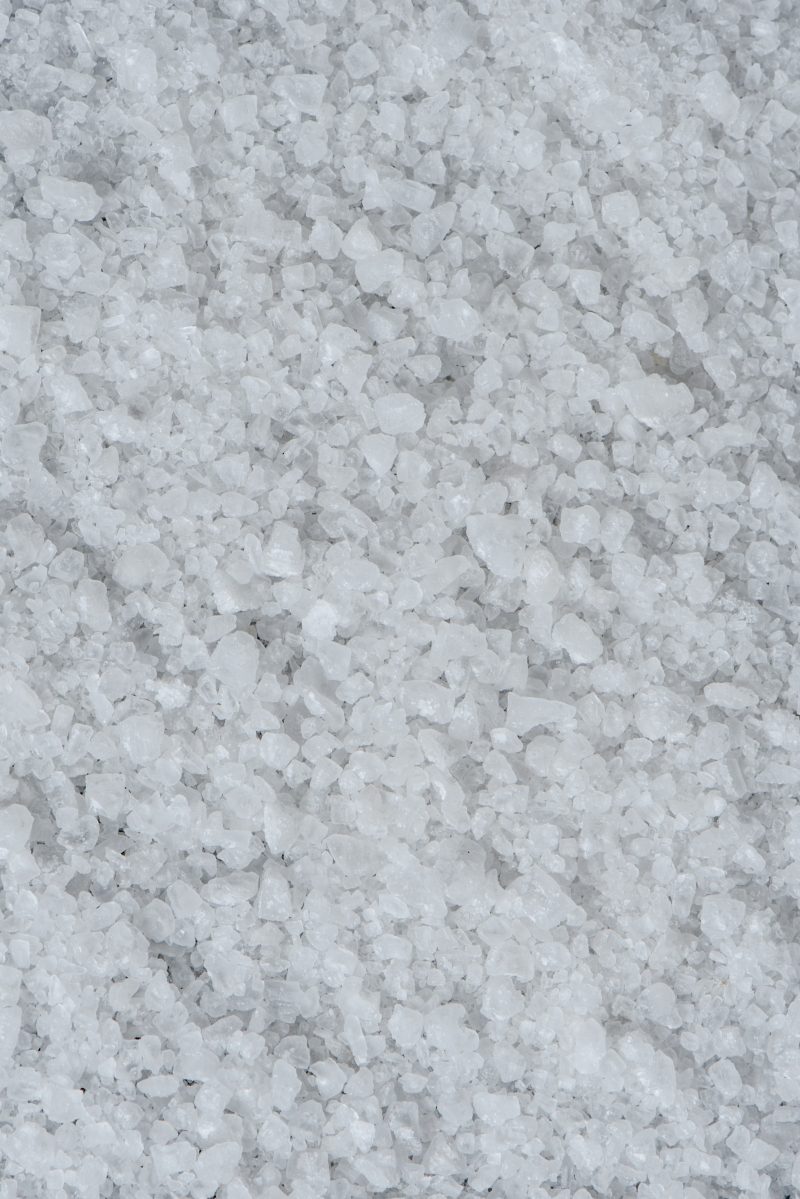
Non-Stick (Teflon-style) Soleplates
Just like the name says, these are designed to keep stuff from sticking. But this coating is the most fragile of the bunch. Running over a zipper or a metal button can create a deep scratch that compromises the whole surface, causing it to peel and flake off onto your laundry. These require the GENTLEST touch.
Safety First (Please Read This)
An iron gets incredibly hot—we’re talking over 400°F (200°C). It’s easy to get complacent and have an accident. I once saw an apprentice get a nasty burn just by brushing his hand against the plate for a split second. It’s a painful lesson.
- Always unplug the iron before you fill it with water or apply any kind of cleaning paste. Always.
- Keep kids and pets out of the room. A hot iron is a magnet for curiosity.
- Never leave an iron face down; use its heel rest. Let it cool completely before storing it, which can take up to an hour. I usually set mine on a heat-proof mat on the counter to be safe.
- And if you’re using something with fumes, like vinegar or acetone, open a window. Don’t lean right over it and breathe that stuff in.
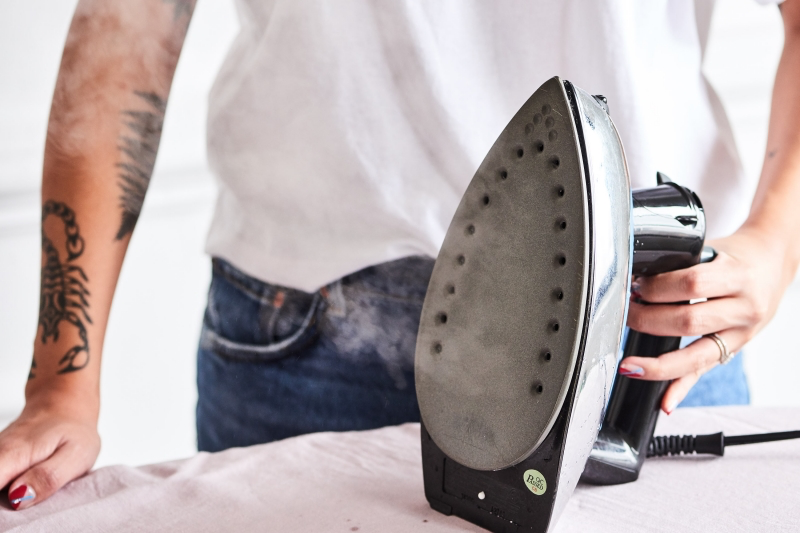
The 30-Second Habit That Prevents 90% of Problems
Want to know the secret to a perpetually clean iron? Wipe it down after every single use. Once you unplug it and it’s still warm (not scorching hot!), just give the soleplate a quick wipe with a clean, damp cloth. That’s it. This one little step removes residue before it gets baked on, saving you a world of trouble later.
Oh yeah, and a quick guide on frequency:
- Wipe-down: After every use.
- Baking Soda Clean: Maybe once a season, or whenever you notice some drag.
- Vinegar Flush: ONLY if it starts spitting and acting clogged. It’s a last resort.
The Cleaning Playbook: Proven Ways to Get the Gunk Off
When a simple wipe-down isn’t enough, it’s time to break out the heavy hitters. Always start with the gentlest method first.
Method 1: The Go-To for Light Gunk (Baking Soda Paste)
Time Commitment: About 15 minutes
Great For: Light stickiness, starch film, general grime. Safe for all soleplate types when used gently.
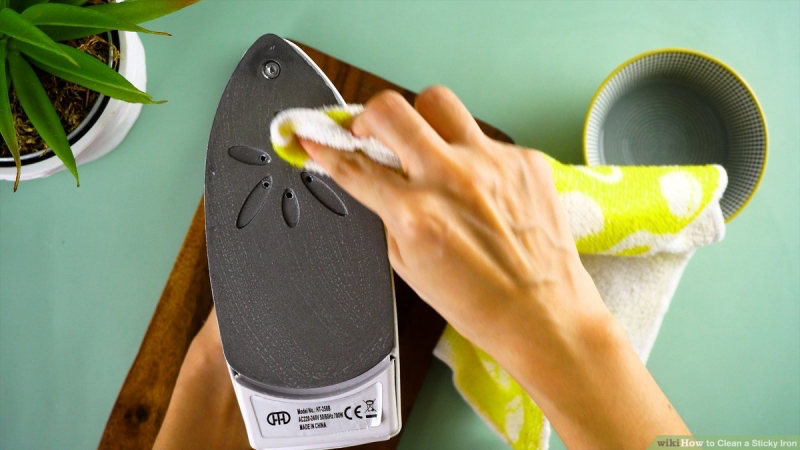
- Make sure the iron is cold and unplugged. Non-negotiable.
- Mix up a thick paste with about two tablespoons of baking soda and one tablespoon of water. You want a toothpaste-like consistency.
- Apply the paste to the soleplate with a soft cloth, focusing on the dirty spots. Try to keep it out of the steam vents.
- Let it sit for about 5-10 minutes. The baking soda will gently lift the grime.
- Gently scrub the plate with a clean, damp cloth in a circular motion. No need to apply a ton of pressure.
- Wipe all the paste residue away with another clean, damp cloth. Then, use a damp cotton swab to meticulously clean out any paste that got in the steam vents. This part is crucial!
- To be extra sure, fill the iron with distilled water, let it heat up, and blast the steam a few times over an old towel to flush out the vents.
A quick word on “hacks”: What about a Magic Eraser? I’d say skip it. Those erasers work by being a super-fine abrasive, kind of like sandpaper. They can easily scratch ceramic and non-stick coatings, and over time, they’ll wear down even a stainless steel surface. It’s not worth the risk when baking soda works just as well and is much safer for your iron.

Method 2: The Nuclear Option for Tough Stuff (The Salt Method)
Time Commitment: 5 minutes
Great For: Stubborn, cooked-on residue. But listen up: this is for STAINLESS STEEL ONLY. If you try this on a ceramic or non-stick iron, you will absolutely destroy it.
- Turn your iron on to its highest setting with the steam function turned OFF.
- Sprinkle a generous layer of coarse salt (kosher or sea salt is great) onto an old, thick cotton towel or a brown paper bag laid flat on your ironing board.
- Once the iron is hot, just run it over the salt a few times. The combination of heat and the abrasive salt will scrape the gunk right off.
- Unplug the iron, let it cool completely, then wipe away any leftover salt crystals with a dry cloth.
Method 3: The Melted Plastic Nightmare (The Cool-Down Method)
Time Commitment: 20 minutes (mostly waiting)
Great For: Melted plastic, polyester, or other synthetic goops.
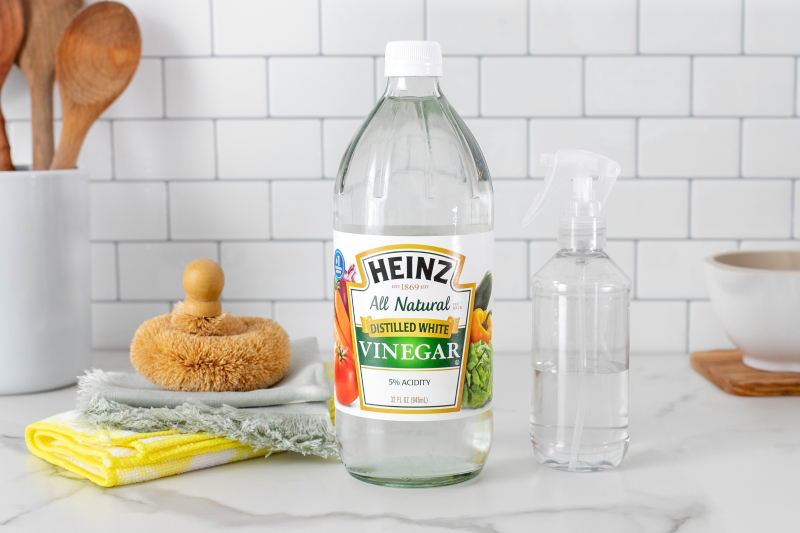
- The second you realize what’s happened, turn off and unplug the iron. Don’t try to wipe it while it’s hot—you’ll just smear the melted plastic everywhere.
- Move the iron to a heat-proof surface. To speed things up, fill a shallow metal pan with ice cubes and rest the soleplate on the ice. The cold shock makes the plastic brittle.
- Once the iron is totally cold, you can usually flake off most of the hardened plastic with a plastic spatula or an old credit card. NEVER use a metal knife.
- For the leftover film, it’s acetone time. In a well-ventilated area, dab a cotton ball with 100% acetone.
- Rub the cotton ball over the remaining residue. It should dissolve pretty easily. Try not to get the acetone on the plastic body of the iron itself.
- Wipe the whole thing down with a damp cloth to remove any acetone traces before you use it again.
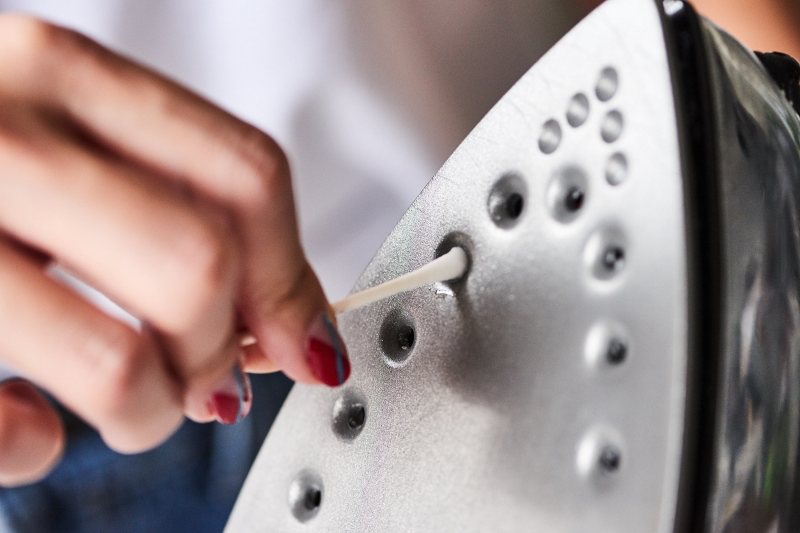
Advanced Moves: Descaling and Commercial Cleaners
Sometimes the problem is on the inside. If your iron is spitting rusty water, you’ve got mineral buildup.
The Vinegar Flush is the way to fix this, but it comes with a warning: some manufacturers advise against it because it can degrade internal parts over time. I see it as a last-ditch effort before you toss the iron. Check your manual first. This process takes about an hour, mostly waiting and steaming. You’ll fill the reservoir with a 50/50 solution of distilled water and white vinegar, let it heat up, and steam it all out over an old towel. Then, you MUST rinse it by doing the same thing twice with pure distilled water.
Alternatively, you can just buy a product made for this. You can grab a tube of commercial iron cleaner from brands like Dritz or Faultless for about $5-$10 on Amazon or at craft stores. They work incredibly well and take all the guesswork out of it. Just follow the instructions on the tube—it usually involves applying the paste to a cloth and rubbing the hot iron over it.
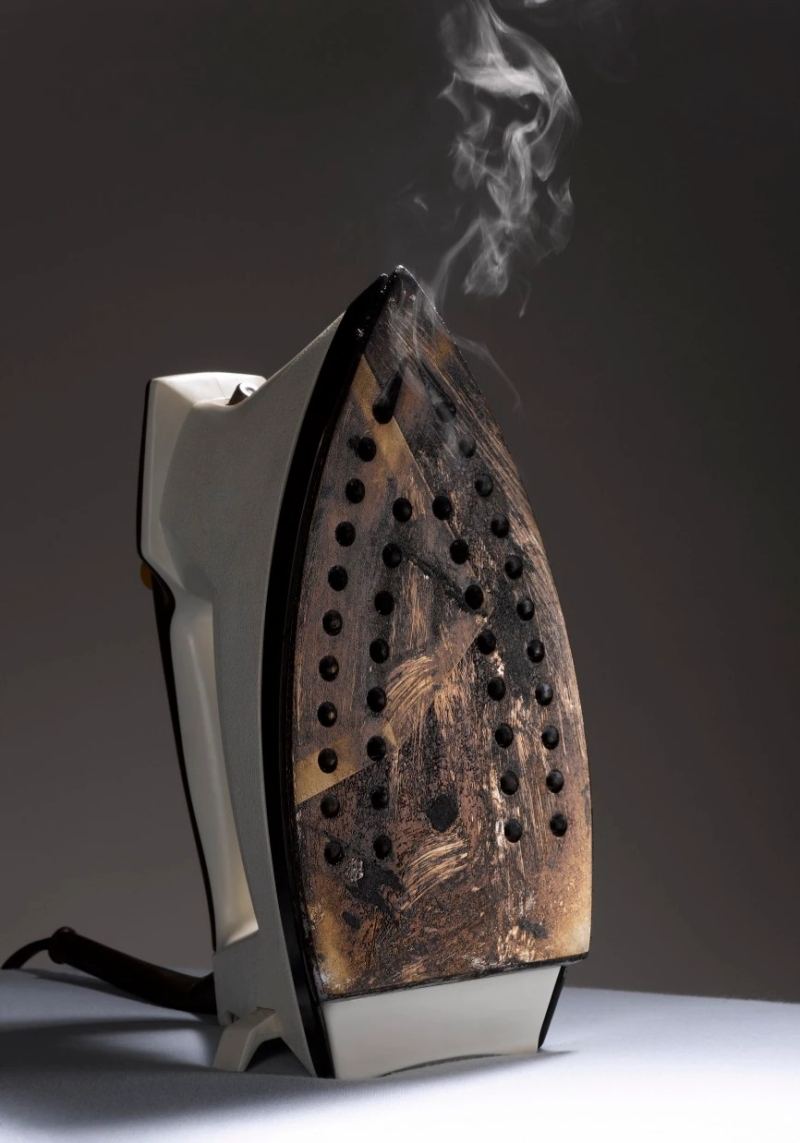
Knowing When to Say Goodbye
Listen, an iron isn’t a family heirloom. If you’re fighting a losing battle, it might be time to move on. A decent new iron costs between $30 and $80, which is a small price to pay to protect your clothes.
It’s time for a new one if you see:
- A flaking non-stick coating (those flakes will get ironed into your clothes).
- Deep scratches that snag fabric.
- A frayed or cracked electrical cord (this is a serious fire hazard).
- It just doesn’t heat up right anymore, either getting way too hot or not hot enough.
Treat your iron well, keep it clean, and it’ll keep your clothes looking sharp in return. It’s a simple tool, but a powerful one when it’s in good shape.
Inspiration:
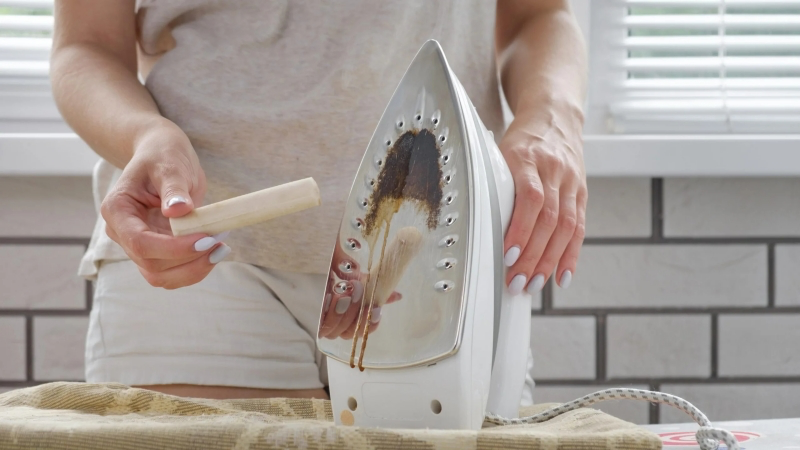
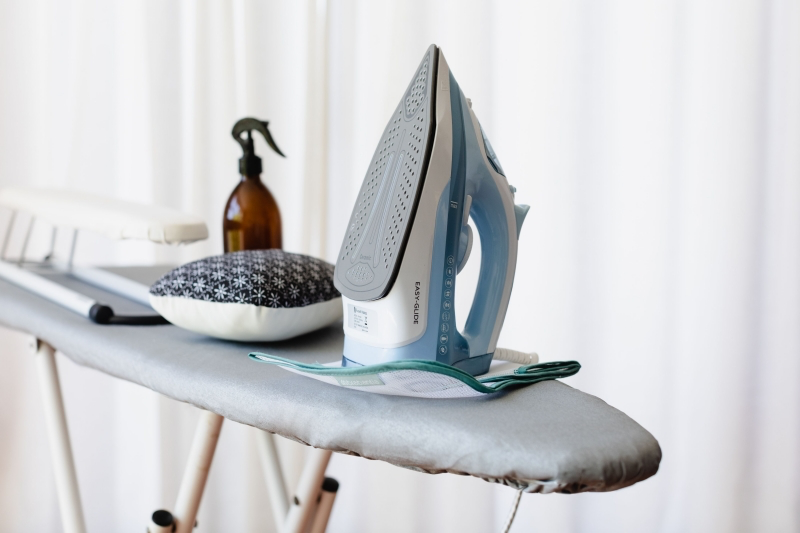
The number one enemy of a steam iron? Tap water. Its minerals clog the vents, causing it to spit white, chalky residue.
This is why the instruction manual insists on distilled water. Those minerals don’t evaporate; they build up into a hard scale called limescale, choking the steam channels. Using only distilled water isn’t just a suggestion—it’s the cheapest insurance you can buy to prevent internal gunk and ensure your iron, whether it’s a basic model or a high-end Rowenta, lives a long, effective life.
What about the sticky, brown film from spray starch or fusible interfacing?
For this specific type of cooked-on gunk, sometimes a dedicated hot iron cleaner is the fastest solution. Products like Dritz or Faultless come in a solid stick form. You apply it to the hot soleplate (over an old towel), and the residue melts and wipes away with a soft cloth. It’s a tailor’s trick for quickly fixing a sticky situation without extensive scrubbing.










